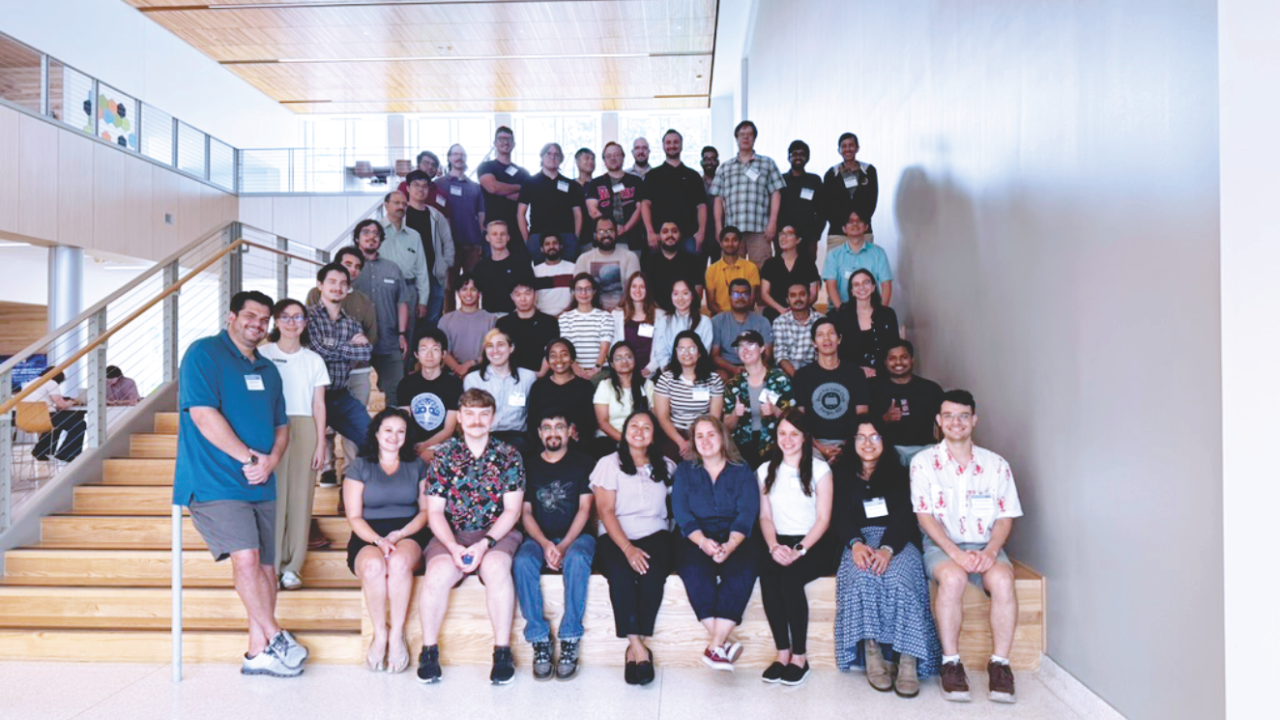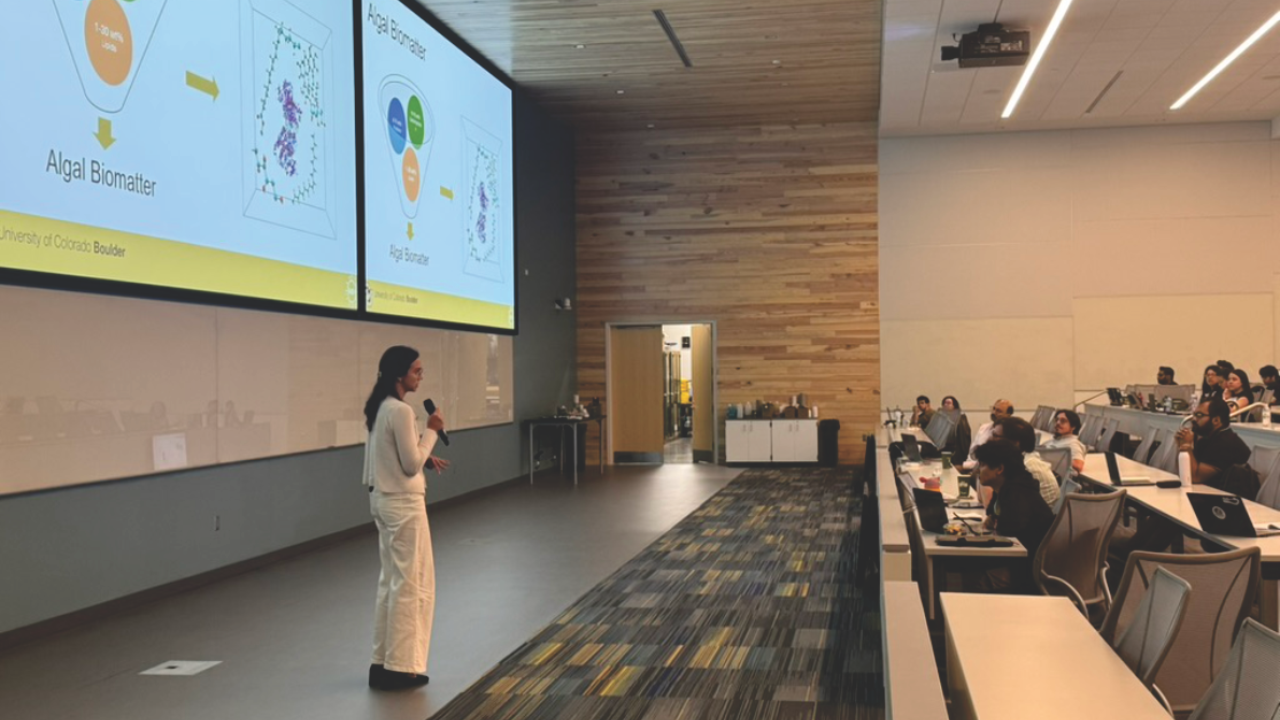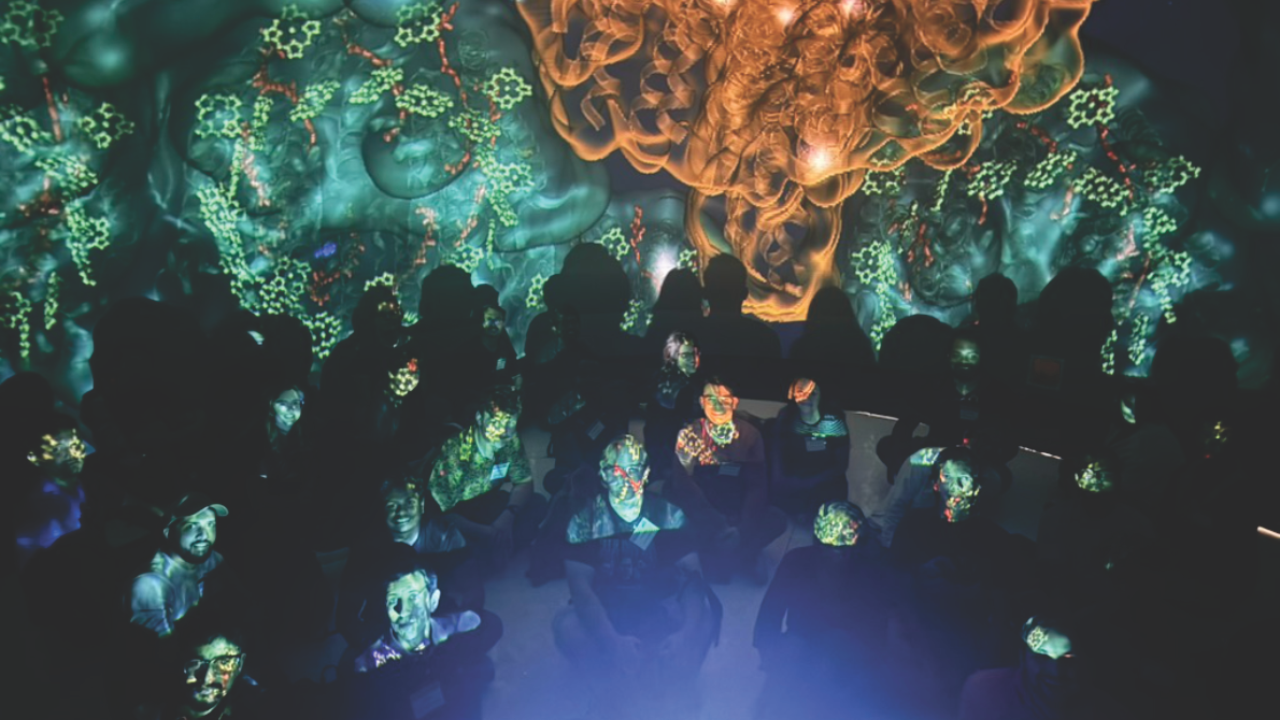content body

More than 60 participants from around the world gathered at Auburn University for the NAMD and VMD computational biophysics workshop, one of the field’s leading training programs.
For the fourth time in two years, Auburn University became a hub for global collaboration and cutting-edge science as it hosted one of the world’s leading workshops in computational biophysics.
Led in part by Rafael Bernardi, associate professor in the College of Sciences and Mathematics’ Department of Physics, the workshop trains students and professionals to use two of the most widely adopted tools in molecular research: Nanoscale Molecular Dynamics (NAMD) and Visual Molecular Dynamics (VMD). These powerful software programs allow researchers to simulate and visualize how proteins and other macromolecules move and interact—insights that are critical for understanding diseases, developing treatments and advancing basic science.
The tools are supported by one of the longest continuously funded National Institutes of Health centers in the country.
“All of this is possible because of more than 30 years of NIH support,” Bernardi said. “And now Auburn is part of that. That’s important for our students, our college and our place in the scientific community.”
This year’s workshop drew more than 60 participants and nearly 300 applicants from across the globe, making it one of the most competitive sessions to date. Many attendees are working on research with real-world applications, from developing new medications and studying immune responses to modeling genetic mutations that cause disease. The software taught at the workshop allows researchers to simulate how proteins and other molecules behave over time, offering insights that are often difficult or impossible to observe directly in the lab.
While the science is rigorous, the workshop is designed to be collaborative and hands-on. Half the time is spent in lectures, the other half solving real research problems. Some participants are new to the software, while others bring complex questions from their own labs.
“You’re not learning one fixed protocol,” said Marcelo Melo, an assistant professor at Colorado State University and former postdoctoral researcher in Bernardi’s lab. “You’re learning a flexible tool you can take home and apply to your own systems and your own questions.”
The range of those applications is wide. The software has been cited in hundreds of high-impact papers—more than 100 in Nature and Science alone—and is used in studies ranging from immune system behavior to drug development, genetic disorders and materials science.
Melo said the experience can be especially eye-opening for students. Many arrive expecting plug-and-play tools and leave with a deeper understanding of both the possibilities and the challenges.
“They realize this is just as challenging and rewarding as running a lab experiment,” he said.

Students and researchers shared work and trained on powerful molecular dynamics tools at Auburn’s biophysics workshop.
The workshop is designed to spark that kind of discovery. Short talks, long lunch breaks and group dinners encourage connection. Attendees who arrive as strangers often leave as colleagues and future collaborators.
“It builds a community,” Bernardi said. “People stay connected long after they leave.”
Hosting the event at Auburn has proven to be a draw in itself. The university’s infrastructure, accessibility and welcoming environment have earned praise from the organizing team.
“Everything runs smoothly here,” said JC Gumbart, professor of physics at Georgia Tech. “The room is perfect; the setup is ideal and the support from the university has been top-notch. It lets us focus on the science, and that’s exactly what you want in a setting like this.”
And while the logistics help, Gumbart, Bernardi and Melo see something more lasting at work. They believe the workshop is helping Auburn—and the Southeast—emerge as a meaningful player in the field.
“Theoretical and computational biophysics isn’t something people usually associate with Auburn,” Melo said. “But we’re changing that. We’re expanding the reach of this field and helping people see what’s possible.”
That visibility matters, Bernardi added—not just for reputation, but for recruiting the next generation of scientists.
“When people go back home with a great impression of Auburn, that makes a difference,” he said. “Maybe they’ll apply here. Maybe they’ll collaborate. Maybe they’ll tell their students. That’s how you build momentum.”





